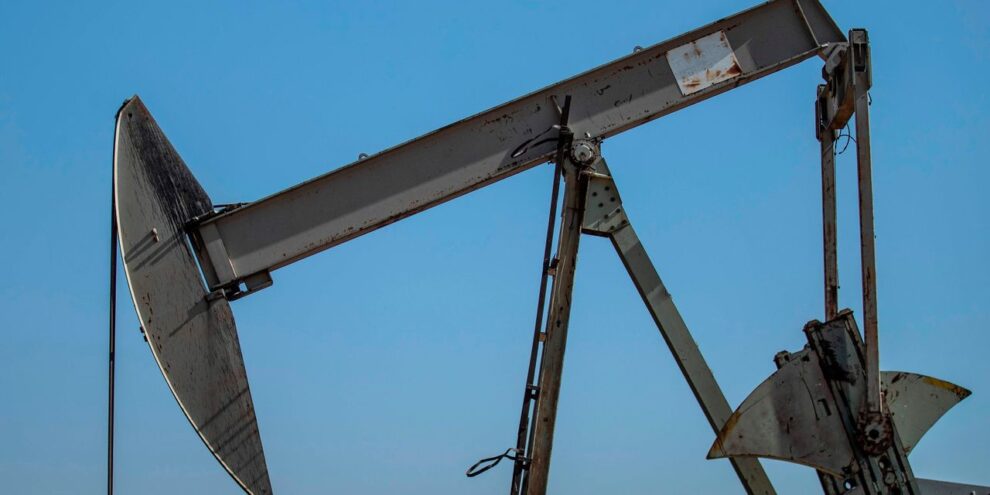
Oil futures on Friday finished sharply higher for the month, finding support as traders remained hopeful that efforts to rein in global supplies will offset pressure on demand from the continued spread of COVID-19 and slower-than-expected vaccine rollouts.
“There is an elephant in the room that traders cannot ignore,” said Paola Rodriguez Masiu, senior oil markets analyst at Rystad Energy, in market commentary. “It’s the start of Saudi Arabia’s extra production cuts” on Monday.
The Organization of the Petroleum Exporting Countries and their allies, together known as OPEC+ agreed in January to keep most oil production curbs in place from February to the end of March.
Additionally, Saudi Arabia agreed to implement a unilateral production cut of 1 million barrels a day starting in February.
“Although the news has been mostly priced in, having the event around the corner provides confidence for the market,” said Masiu. “Traders wait to see the first results of Saudi Arabia’s move, not just in theory but on the ground, in the actual market.”
For Friday’s session, West Texas Intermediate crude for March delivery CL.1, CLH21, inched down by 14 cents, or 0.3%, to settle at $52.20 a barrel on the New York Mercantile Exchange. Prices based on the front-month contract fell by 0.1% for the week, but tallied a climb of 7.6% for month of January, according to Dow Jones Market Data.
March Brent crude BRNH21, +0.65%, which expired at the end of the day’s session, rose 35 cents, or 0.6%, to end at $55.88 a barrel on ICE Futures Europe, logging a nearly 0.9% weekly gain, and a 7.9% increase for the month. April Brent BRNJ21, +0.18%, the most active and now front-month contract, fell by 6 cents, or 0.1%, to $55.04 a barrel.
“Crude-oil futures remain stuck in a range as traders wrestle with the implications of weak near-term demand offset by prospects for improvement once Congress debates and ratifies the stimulus legislation,” Marshall Steeves, energy markets analyst at IHS Markit, told MarketWatch.
“Market sentiment was also supported by the latest weekly inventory report that showed the largest [U.S.] crude stock draw since July, with production and imports both lower,” he said.
Meanwhile, “the near-term outlook for demand took a hit this week with several additional travel restrictions imposed in recent days by the U.K. and New Zealand, likely having an immediate effect on demand for jet fuel,” said Steeves.
When it comes to Saudi Arabia, however, Edoardo Campanella, economist at UniCredit, said investors may be overly optimistic about the ability of the country and and major producers to keep a lid on output if the pandemic continues to weigh on demand for longer than expected by the market or if high prices bolster shale production in the U.S.
“In such a scenario, Riyadh is unlikely to intervene unilaterally once more and play the role of swing producer,” he said.
“It will expect the rest of the [OPEC+] alliance to share the burden of the adjustment. But calling for a coordinated response will be challenging as OPEC+ member have different price targets, economic priorities and political goals,” he said.
Read: OPEC’s Barkindo stresses importance of oil market stability and investment
Back on Nymex, February gasoline RBG21, -0.94% shed 0.7% to $1.5725 a gallon, with the contract settling up by 1.5% for the week, and gaining nearly 12% for the month. February heating oil HOG21, -0.16% fell by almost 0.1% to $1.6004 a gallon, for a weekly rise of almost 1.6% and a month increase of 8.4%. The February contracts expired at the end of Friday’s session.
March natural gas NGH21, -3.53% lost almost 3.8% to settle at $2.564 per million British thermal units, settling 4.4% higher for the week and up 1% for the month.
“Chilly weather in the Northeast likely will lead to a spike in heating load demand for the next couple of days, though conditions through the first week of February are expected to be milder,” said IHS Markit’s Steeves.
Thursday’s storage report from the Energy Information Administration “showed a below-average withdrawal from storage, which put an end to the rally that had been underway previously,” he said. “While demand for home heating has varied along with the changing weather patterns, commercial demand continues to trend below normal due to the impact of the pandemic.”
Also see: Gold settles with a loss in January, but upbeat outlook remains intact











Add Comment